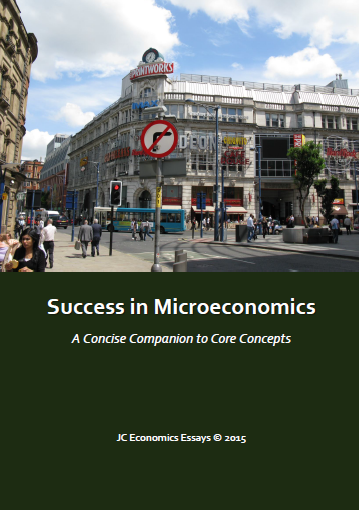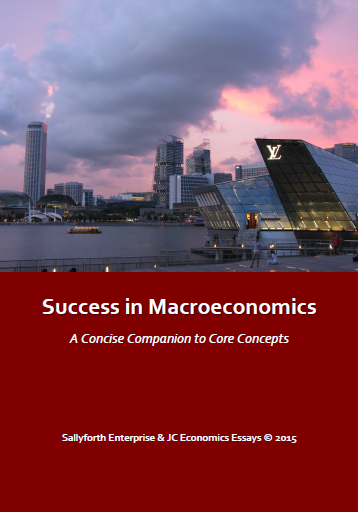Introduction - market structure, oligopolies and monopolistic competitive firms
Firms’
behaviours can be explained by the market structures they exist in, where the conditions and situations are the number
of buyers and sellers in the market, the type of goods they produce be they homogeneous or differentiated, the barriers to entry that make it easy or
difficult for individual firms to enter or exit the industry, and the strategic
interactions between different rival firms. These conditions and situations would determine the behaviour of various types of firms in different industries in Singapore.
In Singapore Singapore ’s
markets allows just a few firms to dominate and hence it would seem that prima
facie oligopoly is the most appropriate structure that can explain the
behaviour of firms in Singapore
This Economics paper therefore argues that many firms in Singapore
However, on the other hand, it can also be argued that monopolistic competition can also describe and explain the behaviour of smaller firms inSingapore, given that there are many smaller firms in Singapore
However, on the other hand, it can also be argued that monopolistic competition can also describe and explain the behaviour of smaller firms in
Oligopoly can be applied to Singapore
First,
there are significant barriers to entry for most large firms in Singapore Singapore
[Economics tutor's note: For advanced A level students or H3 students or undergraduate students who want to learn more Economics, see Oliver Williamson for more Economics materials on asset specificity. On a related note, for transaction costs: Ronald Coase might be interesting to read about too, on this topic.]
Other barriers to entry may not be based on EOS, which is a natural kind of barrier; other barriers may be man-made artificial barriers such as laws and regulations, such as those regulating SMRT and SBS – hence, the high barriers to entry that are characteristic of oligopolies are present in many large Singapore firms.
[Economics tutor's note: For advanced A level students or H3 students or undergraduate students who want to learn more Economics, see Oliver Williamson for more Economics materials on asset specificity. On a related note, for transaction costs: Ronald Coase might be interesting to read about too, on this topic.]
Other barriers to entry may not be based on EOS, which is a natural kind of barrier; other barriers may be man-made artificial barriers such as laws and regulations, such as those regulating SMRT and SBS – hence, the high barriers to entry that are characteristic of oligopolies are present in many large Singapore firms.
Secondly,
oligopolistic markets are also characterised by non-price competition, using
aggressive branding to differentiate their goods, with firms being mutually
interdependent, which results in their need to monitor their rivals’ actions
and devise counter-responses. Strategic interaction, which means responding to
rivals’ actions by devising counter-responses, is a particular characteristic
of oligopoly not found in other market structures.
There are many good examples to illustrate this feature. Take the example of the market forSingapore
There are many good examples to illustrate this feature. Take the example of the market for
In major
markets such as banking, supermarkets, and telecommunications, non-price
competition is easy to spot from differentiated services offered; often a new
service or promotion becomes widespread after it is first started by a dominant
player in the market, demonstrating once again that the firms are strategically
interdependent. Oligopolies have strategic, game-theoretic interactions because
they face rivals and not competitors. Because of Singapore
In banking, for example, there are the giant firms DBS and UOB, while theSingapore
In banking, for example, there are the giant firms DBS and UOB, while the
Monopolistic competition can be applied to Singapore
On the
other hand, monopolistic competition can also explain many of the other types
of firms in the Singapore Singapore Singapore
Conclusions
While
there are many market structures, such as perfect competition, monopolistic
competition, oligopoly, and monopoly, primarily monopolistic competition and
oligopoly are relevant, given Singapore Singapore Singapore Singapore
JC Economics Essays: Tutor's Comments - This Economics essay on market structure, about oligopoly and monopolistic competition, is rather well argued, interesting, and relevant. The Economics materials presented are based on real life examples from the relevant context, and the English language is fluent and clear. The student presents material that is clear, easy to read, and in a logical, coherent fashion that would impress tutors. The conclusion is evaluative and a judgement is properly made. Overall, it is definitely possible to succeed in writing good Economics essays if students learn how to write such essays under examination conditions, and exhibit these good attributes. However, of course it has to be said that the proper Economics diagrams and the relevant explanations of both oligopolies and monopolistic competitive firms are required for the best grades. Also, at some junctures, this Economics essay seems a bit repetitive, redundant, tautological, and perhaps even convoluted, but overall this issue seems more of a language or writing issue rather than problems with Economics knowledge and content. Do reflect on it and think through the comments; thanks for reading!



